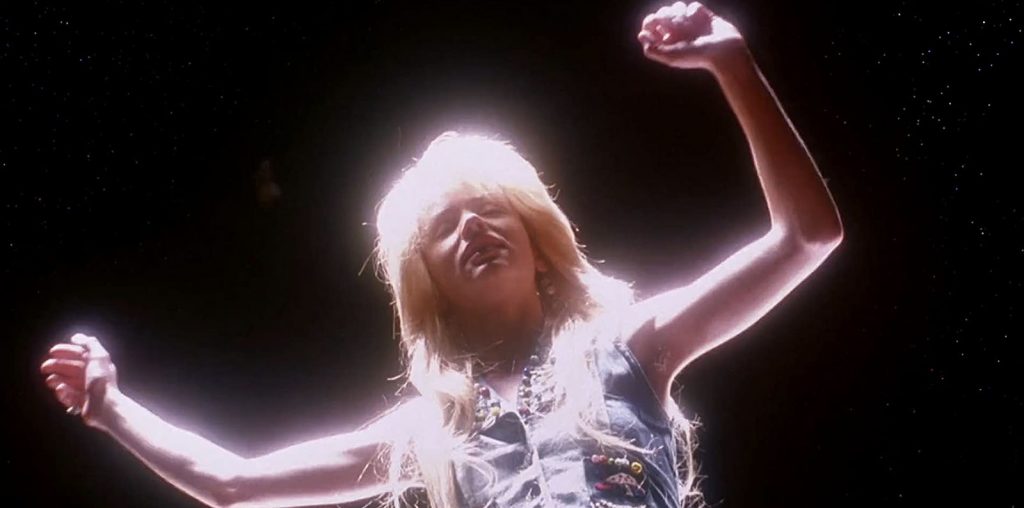
Much ado has been made about the Oscar-caliber cast that’s been assembled for “The Hours.” The film’s true star, however, is its script.
David Hare’s screenplay, adapted from Michael Cunningham’s Pulitzer Prize winning novel, is a marvel. Anyone who has read The Hours knows what a challenge it must’ve posed to Hare. The book/movie centers around three intertwining stories from different time frames. In 1923, Virginia Woolf is writing her novel Mrs. Dalloway in the London suburbs. In 1951, Laura Brown is reading Woolf’s acclaimed novel at her home in L.A., while struggling to prepare for her husband’s birthday. In 2001, Clarissa Vaughan is in New York City, planning a party for her first love, an aging man now dying of AIDS.
Cunningham’s book is rife with references to Mrs. Dalloway. Like Woolf’s protagonist, the three women in The Hours measure out their true lives in the course of one day, each concluding that she’s trapped in an unhappy life. Cunningham also adopts Woolf’s narrative style, writing the book almost entirely in flowing interior monologues. As any screenwriter will attest, it’s tough to adapt a character’s inner thoughts without resorting to that great cinematic cop-out, the voice-over narration.
Hare has succeeded twice over with his adaptation. He uses his playwright skills to supplant the inner thoughts of his characters with exterior dialogue. More importantly, his script alludes to Mrs. Dalloway in a manner that accommodates viewers who haven’t read any of Woolf’s work.
Hare intertwines the stories at a pace more frequently than in Cunningham’s book, a technique that draws quick parallels between the characters. There’s Woolf (Nicole Kidman), who in Cunningham and Hare’s interpretive reading is a prisoner of her own mental instability and the pre-feminist social norms of her era. Her creative juices are stewing as she struggles with Leonard (Stephen Dillane), her devoted but overbearing husband. There’s also the tedium of the suburbs, which she finds dreary compared to London’s vibrant noise and hustle.
Three decades later, we see Laura (Julianne Moore) stuck in a similar sort of suburban purgatory, struggling to bake a cake and care for her son Richie, when all she really wants to do is escape into Woolf’s prose. Her mid-day meltdown offers the film’s most effective moments, as inner discontent brews up and tears cloud her sunny California surroundings.
Finally, we see the modern-day Clarissa (Meryl Streep), a woman who supposedly has transcended the social constraints of earlier times. She’s got a successful job as an editor, a lesbian lover (Allison Janney) and a daughter out of wedlock (Claire Danes). She is the epitome of the liberated postmodern woman, yet countless obligations are bearing down upon her. The key problem is Richard (Ed Harris), a gifted writer for whom she cares, but who is willingly fading from his illness. Richard’s decline opens up harsh truths for Clarissa: she realizes she can’t control his life, which is inextricably linked to her own sense of being. Her life is fraying at its ends, just like the other women.
Philip Glass’s score compliments these stories – his circular arrangements aurally bind together the scene changes from one generation to another, reinforcing the similarities shared by these women. The three leads offer typically strong performances, but the supporting cast – which also includes John C. Reilly as Laura’s husband, Toni Collette as their L.A. neighbor, and Miranda Richardson as Woolf’s sister Vanessa – is stellar.
Director Stephen Daldry (Billy Elliot) also does a competent job. Aside from the beginning and ending scenes involving Woolf’s suicide in the River Ouse, he doesn’t drown his shots with symbolic baggage. With a cast and script this good, he could afford to be economical with the camera work.
